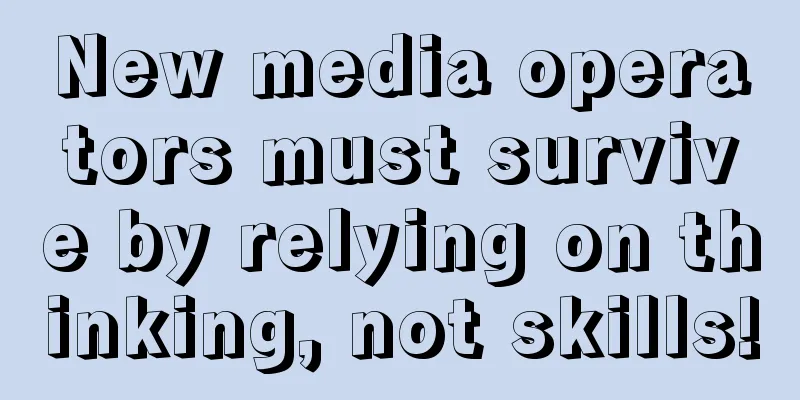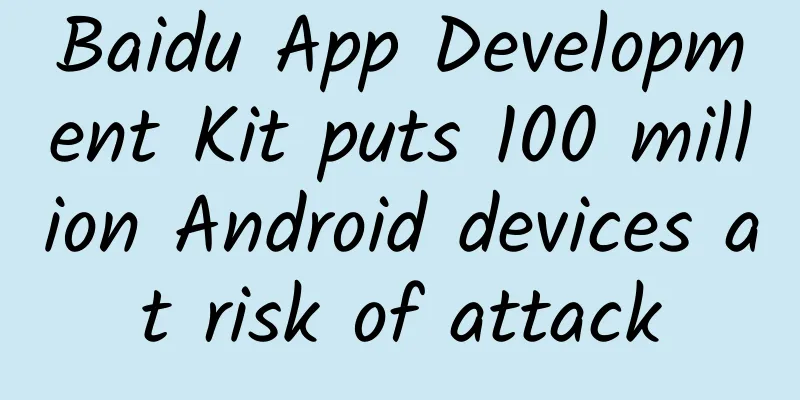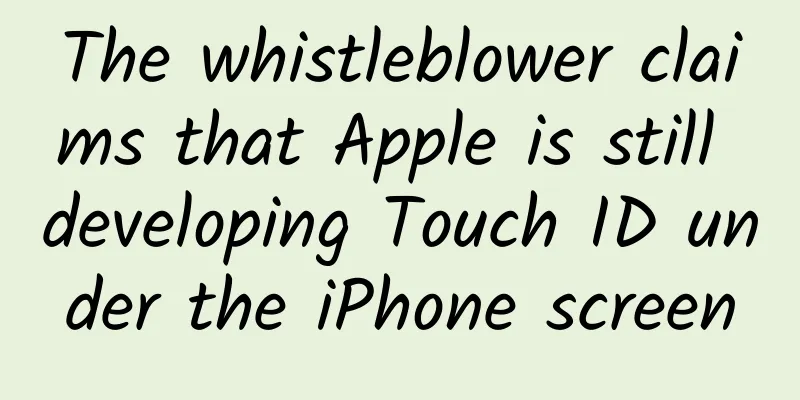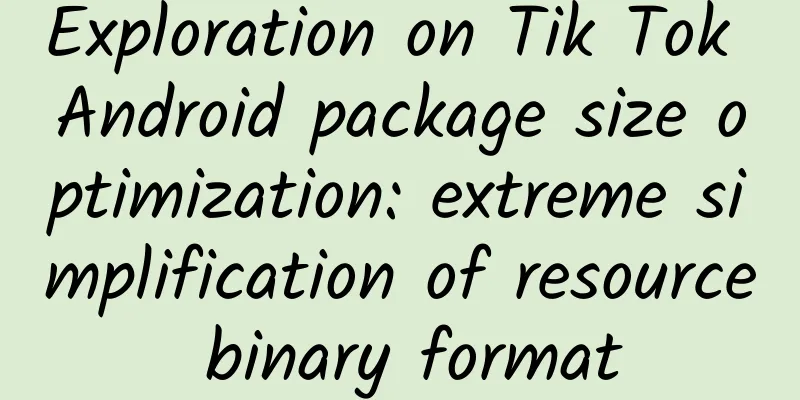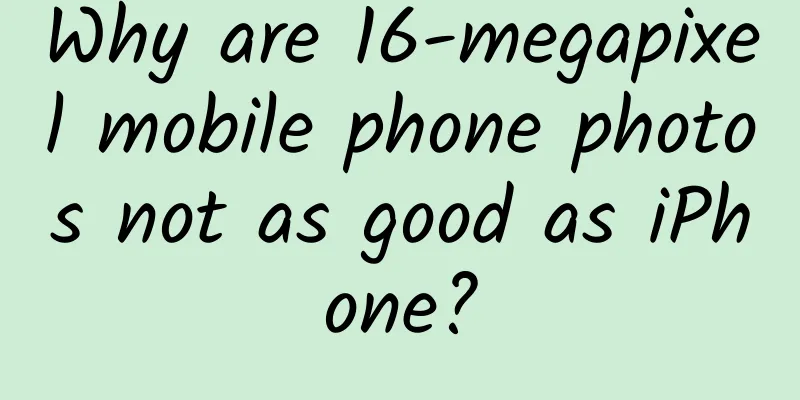Case analysis: How to do user operation?

|
Have you felt this way recently? User operations are difficult to do at a time when Internet traffic is disappearing and customer acquisition costs are rising. Users are the driving force behind product development. User volume, evaluation and experience are all driving the accelerated iteration and updating of products. So, how to do a good job in user operations ? Below I will share our team’s experience in user operations in the form of case analysis. I hope it will be helpful to your future work. one, Go where the users are1. How to obtain cold start /internal test usersFor new products, it is extremely important to find your target user group during the cold start/internal testing period. The main goal of a cold start is to acquire users, verify product value, and verify market response. Who is your target user? Are you a college student? Or are you a newcomer in the workplace in various industries with 1-3 years of experience? If you go to the circle of product managers you are familiar with to find users, the feedback you get may seem professional, but in fact it has certain errors and may even lead product needs astray. So, how do you acquire the right user base? My advice is very straightforward: "Go where the users are," don't beat around the bush. Take our "Ink Knife" product as an example. In the early stage, we targeted two main target groups: product managers and entrepreneurs . We found that there are many such people gathered in community forums, such as product manager forums and entrepreneur communities. We then looked for users in the forum. The feedback from this first batch of precise users played a great role in helping the product to be updated and iterated in the right direction. 2. Accurate positioning and emphasis on brand-effect integrationDo you still remember the long picture article "Enemy of Time" by Pechoin ? It swept the circle of friends at the time and received 30 million readings on WeChat . This can be said to be very good data. However, Pechoin spent nearly 3 million on advertising , but the total revenue of its Taobao store was less than 800,000. Why? The answer is in the last word in the picture below:
Users have to go through seven steps to get the coupon: read the long article - scroll forward to find the "Pechoin Powder" billboard - take a screenshot - Taobao APP - Pechoin flagship store - customer service - coupon. Given that users currently have limited time and energy, every additional process will result in user loss . Therefore, when designing operations or brand activities , it is necessary to shorten the paths that users take to reach their destination and reduce loss along the way . Why tell this story in the operation stage? Because of the phenomenon I have observed: many marketing or operational activities are very large and huge, and it seems that there are a lot of people and it is very lively, and money is spent, but when you look at the final conversion rate , the result is not ideal. This is related to the goals set for the activity. In the past, we would talk about the “rule of seven” – a customer will only truly understand your product and have enough trust in you after seeing your brand or information seven times in a row. That's because there is a certain amount of time and action cost from the time you see the information on TV, newspapers and other media to the time you actually purchase the product. But in the Internet age, when you see a product information that you are very interested in, you can reach the purchasing channel through a link, place an order immediately, and generate conversion immediately. From a marketing operations perspective, how many users can we guarantee will see the brand or information “seven times in a row”? Therefore, in the Internet age, there are almost no pure brand activities. Once you have found the users, you must spare no effort to find ways to generate actual conversions. The integration of product and effect is a basic concept in our market operations. 2. Let users remember who you areThere are more and more homogeneous products on the market, and "making users remember you" is an important step in the product promotion process. We have summarized the following methods: 1. Find your product’s core differentiationTo make your product stand out from the crowd, core differentiation is the key factor that distinguishes it from homogeneous products. Only when you have characteristics that are different from other products can you leave an impression on users and make them remember you. So how can new products discover core differentiation? New products should win by being “sharp” rather than “complete”. Here is a common mispromotion of new products: "one-stop", "full link", "all in one". I think everyone is familiar with such slogans. If it is a mature product that has been in the market for many years, there is no problem in promoting it in this way, because everyone already knows its advantages and features, and these slogans will make everyone feel that it is more comprehensive and powerful. But for a new product, people don’t know what it does, so what they remember as “one-stop”, “full link”, and “all in one” are just vague slogans, not the product itself. New products must clearly highlight their uniqueness. Even if it is a small feature but it solves people’s pain points, people will remember you. How to correctly position the product? Here are three methods. ① Opposition typeThat is, I have what others do not, and I am better than others. Find out the features that are missing or better than similar products. For example, Bullet Messenger, which is a social product like WeChat, has the following highlights: the voice messages sent will be automatically converted into text; and when listening to voice, the progress can be adjusted. ②Scenario typeThat is, constantly strengthen user awareness so that they can remember you in specific relationships, environments or situations. For example, the advertising slogans are “Eat Snickers when you are hungry” and “Drink Dongpeng Special Drink when you are sleepy and hungry.” ③ Upgrade typeThis method is suitable for mature products with high industry awareness. How can we continuously improve our brand image in the minds of users or consumers? You need to constantly upgrade yourself. For example, making the product a "pioneer" in the industry, or upgrading it from "home appliances" to "smart lifestyle." When we were positioning our products, we conducted a comprehensive investigation of the market and user needs. We are currently adopting an oppositional approach. Among similar products, we highlight our two major advantages of "ease of use" and "online collaboration", which is also our core differentiation, so that users will remember us. 2. Operational details create product valueI don’t know if you have this idea: you believe that the core differentiation of a product is determined by the product itself, and operations cannot play any role. Actually, it’s not. As long as you are good at discovering the invisible details of the product, operational details can also create product value. For example: We found that many users made fun or cool prototypes and posted them in the Modao discussion area. Such posts were very popular, and a large number of users left messages under the posts, "Can you share it with me? My email address is [email protected]." We were wondering if we could create a platform like this to meet the needs of both parties. Therefore, our operations team worked with the product technology team to create a “template” section, where users can directly download prototypes made by “template experts” for reuse. This module has also become one of our core differentiations. 3. EmotionalZhang Xiaolong, the father of WeChat, once said, "Let technological products convey humanistic awareness." What does it mean? Any element displayed in the product is you talking to the user and reflects the temperament of the product. This kind of emotional communication will make users remember you. Each of our teams communicates with users in various ways. for example:
Take the operation of Chinese copy as an example. The copywriting of " Xiachufang " has always been very brilliant: "Only food and love cannot be let down", "Who comes from mountains, rivers, lakes and seas, but is confined to the kitchen and love", etc. What its copywriting has always conveyed to users is that food is not just about eating well, but also about an attitude towards living a good life. Another example is the “Modao” email marketing : We added a little more emotional detail to our email. For example, emails are jointly managed by the CEO, product manager, and operations team. Many users will be very surprised after receiving them, and they feel that their suggestions are valued. We are having a real communication conversation. We also incorporate a lot of emotional and personalized communication into our email replies, rather than using robotic, unified language. Let me give you an example: We will send an email to the user on the third day after registration, asking him if he has encountered any problems in using Modao and how we can help. One user responded, "Thank you, but I can't help you for now. I had a fight with my boyfriend." It was our technical colleague who was on duty that day, and he replied, "I don't know what to say... Modao wishes you two to reconcile soon." After receiving the message, the user felt very warm in her heart, so she posted the screenshot and story on Zhihu. A lot of people liked it, and later our email replies increased dramatically. The seed that "Modao is a professional and warm team" was also planted in everyone's mind. 3. Let users become your product evangelistsIn fact, the email story above also leads to the third point we are talking about today, which is to let users spontaneously become your product evangelists and bring in more users. The benefits of doing this are self-evident:
The question is how to motivate users? We once did a survey and found that 56% of Modao’s users came from word-of-mouth recommendations. Why does Modao have such a good reputation? Of course, the first thing is to have a good product experience and solve pain points, which is the basis for generating word of mouth. So, how do you get users to actively recommend to you? This is something operations need to consider. We have tried the following aspects: 1. Effective classificationEffective classification is the first step to understanding things. Based on the above research, we further explored the types of word-of-mouth recommendations. We found that in terms of word-of-mouth recommendation paths, there are two main types: atomized individuals and KOLs at the center of structural holes.
Above, after we have effectively classified and abstracted the two major types of word-of-mouth recommendations, how should we organize and manage them to achieve the effect of self-propagation? Let's talk about it in detail: Atomized individuals KOL of Structural Hole Center The characteristics of an atomized individual make it more suitable for fission. There are many forms of fission, and specific operating methods and cases are mentioned in many growth courses. Fission has two characteristics: ① emphasis on sharing mechanism ② emphasis on post-payment reward mechanism. Atomized individuals - fissionTake Modao’s “Call for Your Alma Mater” campaign as an example. We have made a slight upgrade to the normal "invite friends, both parties get rewards" format. We have set up a tiered reward system. When the number of user invitations reaches a certain level, the reward received will also go up a level. In the school recommendation scenario, these rewards can also be obtained by users' efforts. Here I would like to leave you with a small question to think about: Is this form of university fission suitable for workplace fission? Kol in the center of the structural holeFor the KOL at the center of the structural hole, we believe that it is necessary to consider the following aspects: ① Interest relationship: traffic, fans, sense of achievement ②Emotional relationship: long-term, balanced ③ Organizational relations: search and mobilize How to find KOLs and mobilize them to become evangelists for your products? A stable and long-term cooperative relationship is based on mutual and beneficial interests. KOLs require more time and effort to maintain. KOL itself has a halo effect, which has far-reaching influence and will drive many people to use and like your products. When cooperating with KOLs, first think from their perspective and think about what they value and what form of cooperation is beneficial to both parties. You will find that what I am talking about today is a methodology, not the actual operation method. When you have a goal, you need to research, classify, abstract it into simple models, and then achieve it through effective organization. IV. ConclusionWhen looking for users, you should look for them wherever they are. It is better to find a small number of targeted users than a large number of non-target users. When reaching users, we must have the basic concept of integrating brand and effect and try our best to increase the conversion rate . After users come, you have to make them remember you. You can try two methods: "core differentiation" and "emotionalization". Once users like your product, you can let them actively become your product evangelists through effective classification, abstraction, and organization. Source: |
<<: Mini Program Advertising Value Ranking: Game and Tool Mini Programs Dominate
Recommend
Double 11 sales guide! It’s easy to acquire users by advertising like this!
Double Eleven is coming soon! For advertisers, Do...
Tong Yao hinted that Gu Jia would not remarry? What's the matter with Tong Yao hinting that Gu Jia will not remarry?
Tong Yao hinted that Gu Jia would not remarry? Wh...
iPhone X operation becomes more complicated: Apple is helpless but determined
The arrival of iPhone X means that Apple has fina...
The “space business trip” has been in orbit for three months. What are the expectations for the second half?
Original title: The “space business trip” schedul...
Does the world need Xiaomi?
Celebrity appearances, live streams by internet c...
iOS 14's most controversial feature, should it be removed?
The App Library feature is a bright new feature o...
"Four satellites in one rocket" at sea! China's first private rocket launch at sea, what is the significance?
At 17:34 Beijing time on September 5, 2023, my co...
Understand the rise, turning point and breakthrough of Internet finance in one article!
The rapid rise of any industry is not accidental....
Baidu search promotion keyword skills!
If we want to continuously improve the promotion ...
How to write a short video script? These templates can be applied directly!
Although a short video is only 60 seconds long, e...
A guide to designing splash screen ads for the gaming industry!
The splash screen ad that appears in the few seco...
Once a day versus once a week, is washing more often healthier?
Are people who take a shower once a day healthier...
How much does it cost to recruit investors for the Nanchang tableware mini program?
Nanchang tableware mini program investment promot...
Three modes of pair design
[[148849]] Pair programming is an agile software ...
On the highest realm of operation work - emotional operation
I have mentioned this point many times in my prev...

